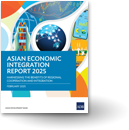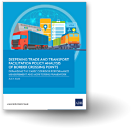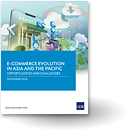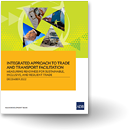Care for a dance? Regulatory diversity and partner choice in Asian preferential agreements in services
One of the striking features of trade diplomacy in recent years has been the seemingly unstoppable march of preferential trade liberalization and rule-making. Such a trend today very much extends to services, most spectacularly of late in Asia.
Of the 80 preferential trade agreements (PTA) in force prior to the year 2000, 70 (87.5%) feature provisions dealing exclusively with trade in goods. In the 13 years since then, 98 of the additional 166 PTAs that have come into force also include provisions on services trade. Meanwhile, half of the World Trade Organization (WTO)-notified services trade agreements in effect since 2008 have involved at least one (South- or East-) Asian trading partner.
Domestic regulation and services trade
Unlike trade in goods, where the removal of border barriers retains significant negotiating traction, domestic regulation is the sole currency of negotiations in services trade. The importance and potentially trade-and investment-inhibiting impact of domestic regulation on service sector performance has received significant attention in policy research circles.
However, less well understood and investigated is the question of whether certain countries are more likely candidates for negotiated regulatory convergence from a services trade perspective?
Distance may not matter much for negotiating services agreements within Asia
Drawing on the literature on the economic determinants of trade agreements and using the World Bank’s database on the restrictiveness of domestic services regimes, we examine the potential for negotiated regulatory convergence in Asian services markets in a forthcoming AIEN working paper.
Our results suggest that more remote countries, with similar economic sizes and greater differences in relative factor endowments compared to the rest of the world, common legal origins, high levels of pre-existing trade and restrictive services regulation are more likely candidates for regulatory convergence within Asia. As an illustration, Indonesia and the Philippines would meet these criteria.
Our empirical model determining the likelihood of services preferentialism in the region, successfully predicts 10 of the 14 services accords negotiated within Asia during 2008-12 as well as 88 of the 89 Asian bilateral trading partners that have no services trade agreements between them.
Our results also suggest that large Asian economies, with lesser differences in relative factor endowments compared to the rest of the world, near ‘balanced’ trade and divergent regulatory frameworks, are more likely to negotiate services agreements with each other. India and Japan are a case in point.
Contrary to expectations, we also found that more distant economies with lower levels of restrictive regulation and higher levels of pre-existing trade, to be more likely candidates for services preferentialism in the region. Once again, India and Japan are a good illustration.
That Asian trading partners may be willing to negotiate services agreements despite the effect of distance makes greater sense when one considers that almost a fourth of all services trade is transacted online, where the effect of distance is far more benign, if not completely absent. Of equal, if not greater, relevance is the fact that the bulk of services trade takes place through a commercial presence in the territory of the export market, reducing distance to zero for such transactions.
Finally, our results suggest that the quest for regulatory approximation may be one of the main objectives of negotiated services agreements. The greater the extent of ex ante regulatory heterogeneity between trading partners, the more likely are they to enter into a services agreement to promote regulatory convergence




